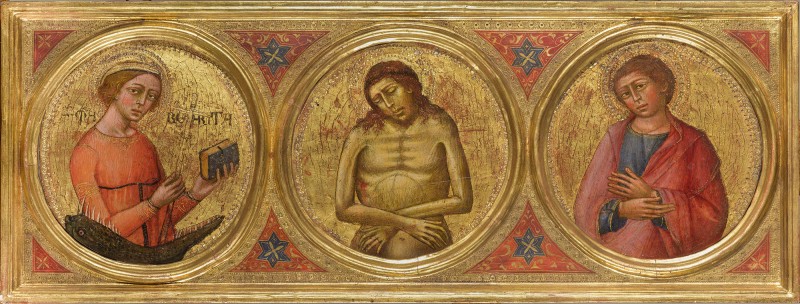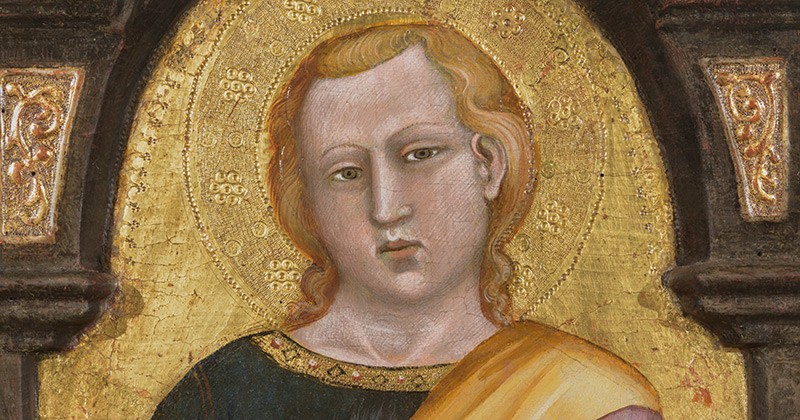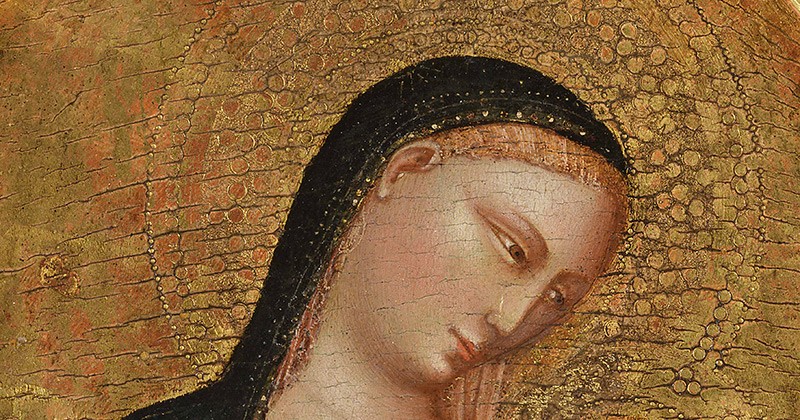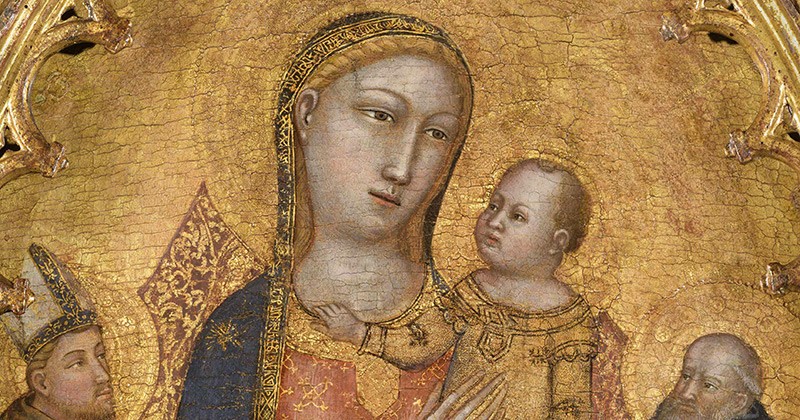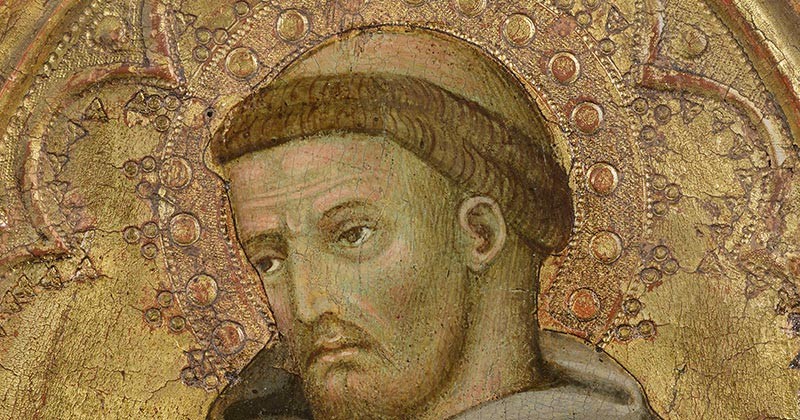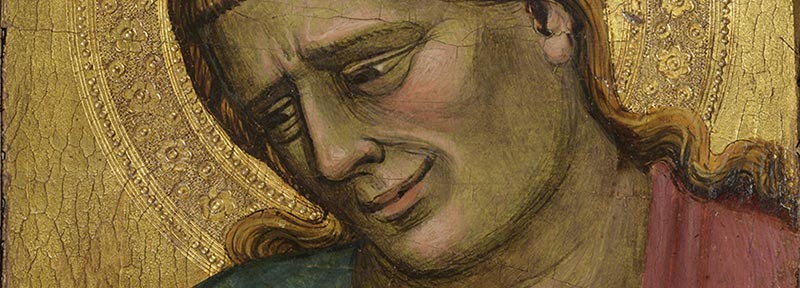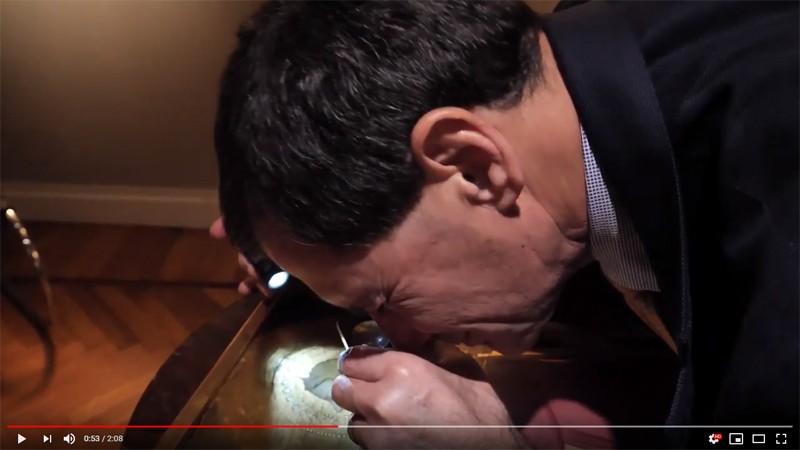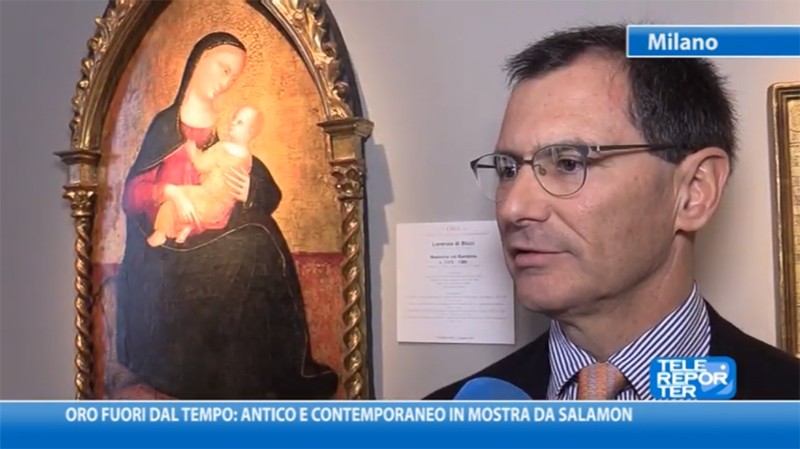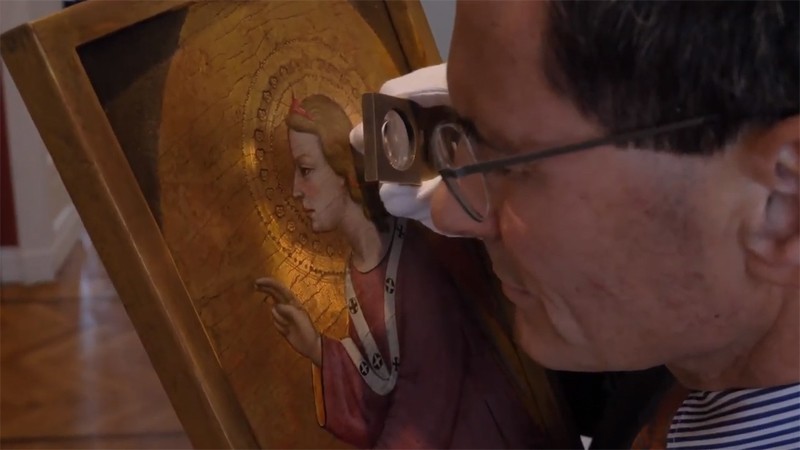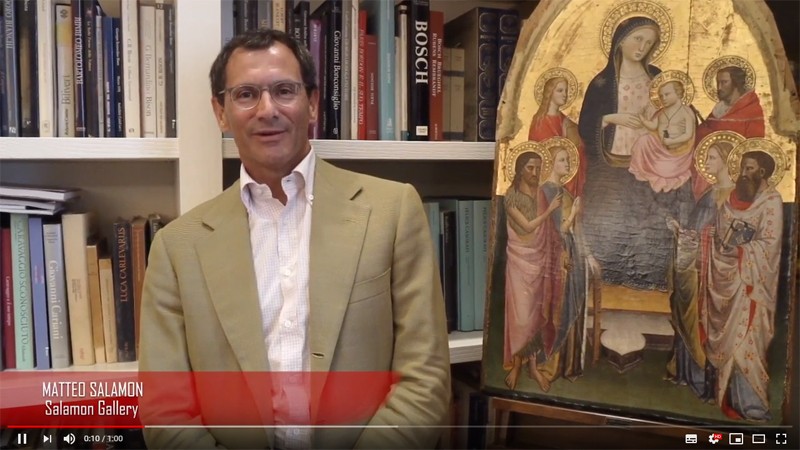Master of the Richardson Triptych
St. Margaret of Antioch, Christ the Man of Sorrows, St. John the Evangelist
The painting shows three tondoes set in a panel that is likely to have been the predella, or possibly the upper section, of a portable altar intended for private devotion. The tondoes contain St. Margaret of Antioch emerging from a dragon's jaws, Christ the Man of Sorrows and St. John the Evangelist grieving. The replacement of the Virgin with St. Margaret, whose presence alongside Christ the Man of Sorrows is decidedly unorthodox, hints at a possible connection with the name of a member of the family who commissioned the altar. The three tondoes are by an anonymous Sienese painter known as the Master of the Richardson Triptych whose temperament and career have long been a focus of study, ever since the Fogg Art Museum in Harvard acquired the triptych after which he is now named. As Everett Fahy has demonstrated, the painter's career spanned some thirty years, starting under the influence of Simone Martini and ending on a note reflecting a Late Gothic sensitivity. The sober yet highly characterised style of the three tondoes allows us to date them to c. 1370.
Read more
Spinello Aretino
St. John the Evangelist, 1382-1387
This was the first right-hand side panel of a five-section polyptych whose central panel depicted a Madonna and Child Enthroned with the figures of St. Augustine on the left and St. Dominic on the right. The polyptych was probably completed by a now lost predella. The presence of St. Dominic has suggested to some scholars that the polyptych must originally have been painted for a church of the Dominican Order of Preachers. The artist has been identified as Spinello Aretino, a painter from Arezzo who worked chiefly in Florence and Siena. Arriving in Florence in 1387, he was almost immediately commissioned to fresco the sacristy of San Miniato al Monte, his taste for detail and the richness of his palette earning him instant popularity in the city. The absolute mastery of the transparency of light in the saint's mantle allows us to date this panel to the same phase in his career as the frescoes in San Miniato.
Read more
Lorenzo di Bicci
Madonna and Child, c. 1375
The Virgin is shown seated on a cushion on the ground with the Christ Child on her lap in what is an extraordinarily affectionate exchange. The Virgin's pose and the fact that the rendering of the setting is so plain – consisting basically of the cushion and of a line dividing the floor from the back wall – are typical features of the iconography known as the Madonna of Humility which focused on her natural, humble aspect. The artist who painted the picture has been identified as Lorenzo di Bicci, the founder of a dynasty of artists who worked in Florence from the second half of the 14th century almost to the end of the 15th. Testifying to the transition in Florence from the tradition of Giotto to the International Gothic style, Lorenzo is remarkable for the richness of his palette and the sophistication of his decoration, as we can see here in the Christ Child's tunic which is punched with the precision of a goldsmith.
Read more
Lorenzo di Bicci
Madonna and Child Enthroned with Four Saints, c. 1380
The Madonna is depicted enthroned, lifting the Christ Child, while on two registers we see St. Louis of Toulouse and St. Catherine of Alexandria on her left and St. Anthony the Abbot and St. John the Baptist on her right. The painting, by Florentine painter Lorenzo di Bicci, is the upper central panel of a tabernacle whose side doors have been lost. In the early 20th century the panel was in the Castle of Vincigliata near Fiesole in the collection of English politician John Temple Leader, a friend and pupil of art historian John Ruskin. It may well have been the figures' stern look, harking back to the tradition of Giotto, Bernardo Daddi and the Orcagna brothers and thus imparting a vaguely retrospective feel to the picture, that appealed to the taste of an English gentleman educated to appreciate the simplicity and expressive immediacy of 14th century religious art, in particular from the years following the tragic experience of the Black Death.
Read more
Andrea di Bartolo (1360 - 1428)
Saint Francis of Assisi, c. 1400
St. Francis is portrayed in a half-figure pose, showing the stigmata on his hands and ribcage. His face, in a three-quarter pose with an intensely human expression, has the makings of a fully-fledged portrait. The painting has recently been attributed to a Sienese master called Andrea di Bartolo, the son of Bartolo di Fredi and an exponent of the city's art in the moment of transition from the 14th to the 15th centuries. The picture's format suggests that it is likely to have been the right-hand side panel on the upper register of a polyptych, thus St. Francis must have been one of a series of saints sealing an altarpiece from above, along the lines of the compositional model that Andrea adopted in his polyptych for the Basilica dell'Osservanza in Siena. A taste for detail handled with a style which, while mimetic, chooses not to forgo a linear elegance that is Late Gothic in flavour, is typical of this artist, who was also a very successful illuminator.
Read more
Lippo di Dalmasio
The Virgin and St. John the Evangelist Grieving, 1390 c.
These two paintings were the panels positioned at the end of the arms of a now lost Crucifix, reflecting a very common construction in Gothic painting. The two figures of the Virgin and St. John are remarkable for the expressive intensity of their grief, the Virgin clutching her arms to her breast as though the son who has just died were still in her womb. Though the pictures have been known to scholars for some time, the artist who painted them has only recently been identified as a master from Bologna working at the turn of the 14th century named Lippo di Dalmasio, thanks to their formal affinity with the end panels of a Crucifix formerly in the church of San Girolamo della Certosa and now in the Collezioni Comunali di Palazzo d'Accursio. An important player in his city's public life, Lippo was for a long time the artist to whom other Bolognese painters turned for their inspiration, thanks primarily to his ability to convey psychological introspection in his figures' features, as indeed we can see in the panels on display here.
Read more
Matteo Salamon
and his art gallery
Take your time to see this 2 min. video, which shows our Milan based Art Gallery.
We are Art Dealers specialized in Old Master and Modern Italian Paintings. We just deal with Museum quality paintings: from Italian Primitives Gold Grounds, to Venetian "Vedutisti", and finally the greatest Artists of the "Italian Novecento".
We have a special passion for Gold Ground Paintings.
Video Copyright by Claudio Moschin
Read more
Oro, 1320-2020. Dai Maestri del Trecento al Contemporaneo
21 Nov 2019 - Milan
The exhibition "Gold, 1320 - 2020. From the Masters of the fourteenth century to the Contemporary" organized by Matteo Salamon of the Milanese gallery of the same name, in the prestigious location of Palazzo Cicogna in Milan from 22 November 2019 to 31 January 2020.
Read more

